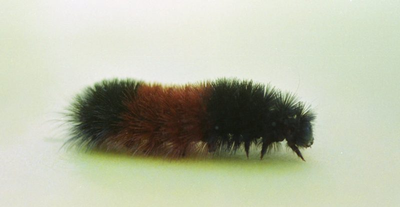
(WHTM) -- You may have heard that the woolly bear caterpillar can 'predict' whether or not we have a mild or a harsh winter. But is that true?
According to folklore, the amount of black on the woolly bear in autumn varies equally with the severity of the coming winter where the insect is found.
If the woolly bear is mostly black, it will be a very harsh and severe winter. If the woolly bear has an orange stripe, it means that the winter will be mild. The wider the red-orange band is, the more mild the upcoming winter will be.
However, the National Weather Service (NWS) said this is merely a myth, and the caterpillar cannot predict what winter will bring. According to the agency, the coloring of the woolly bear has to do with its age, species, and what it has been feeding on.
The better the growing season, the larger the caterpillar becomes and in turn, gives the insect a narrower red-orange band in the middle. So this band can be an indicator of the current or past growing season, rather than how harsh the winter will be.
Additionally, the coloring indicates the age of the woolly bear caterpillar. The NWS said that caterpillars shed their skins (also called molting) six times before reaching adult size, becoming less black and more red-orange. These caterpillars ultimately turn into tiger moths, and there are 260 different species of those moths in the world.
The NWS said that the myth has been around since the colonel times. The agency said that in 1948 Dr. Howard Curran did a small study where he counted the brown bands on different insects and predicted what winter would be like. It was then published in a newspaper and spread around the country.
The NWS is, however, predicting an El Niño winter, which typically means a wetter winter for the southern third to half of the U.S. and dry and warm conditions for the Pacific Northwest and Ohio Valley.
While El Niño’s impacts are never a guarantee, the climate pattern tends to influence weather across the U.S. as it reaches peak strength in the winter. Depending on where you live, that could mean a decent snowfall - or barely any snow at all.
Alix Martichoux contributed to this report.